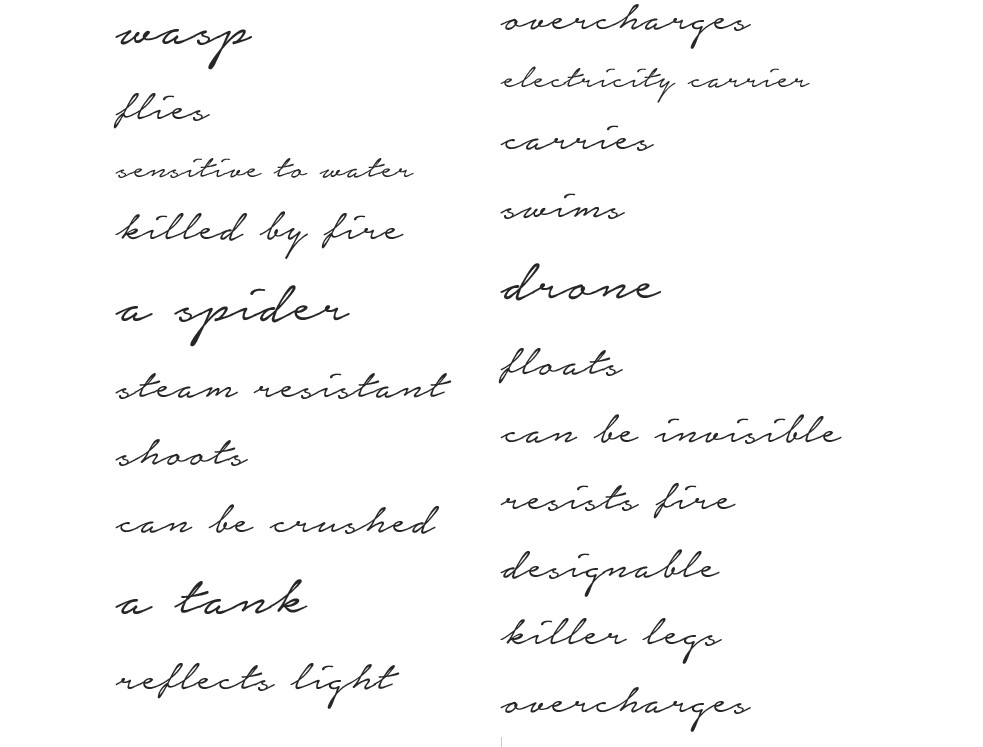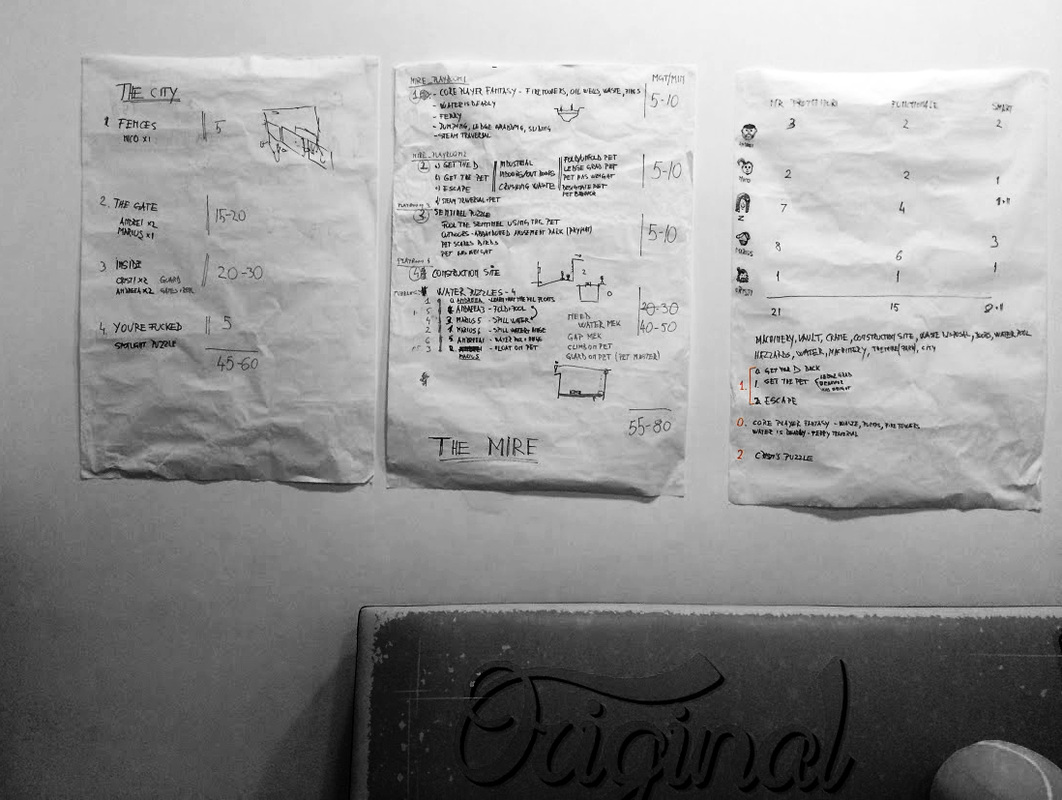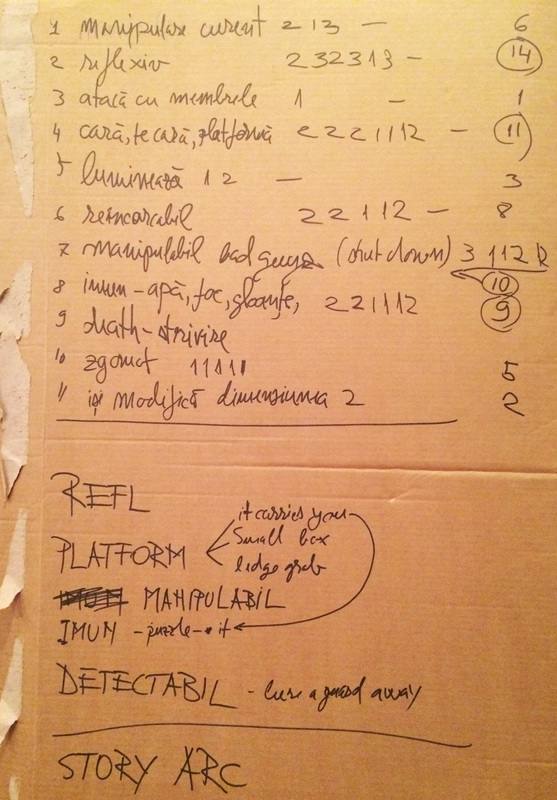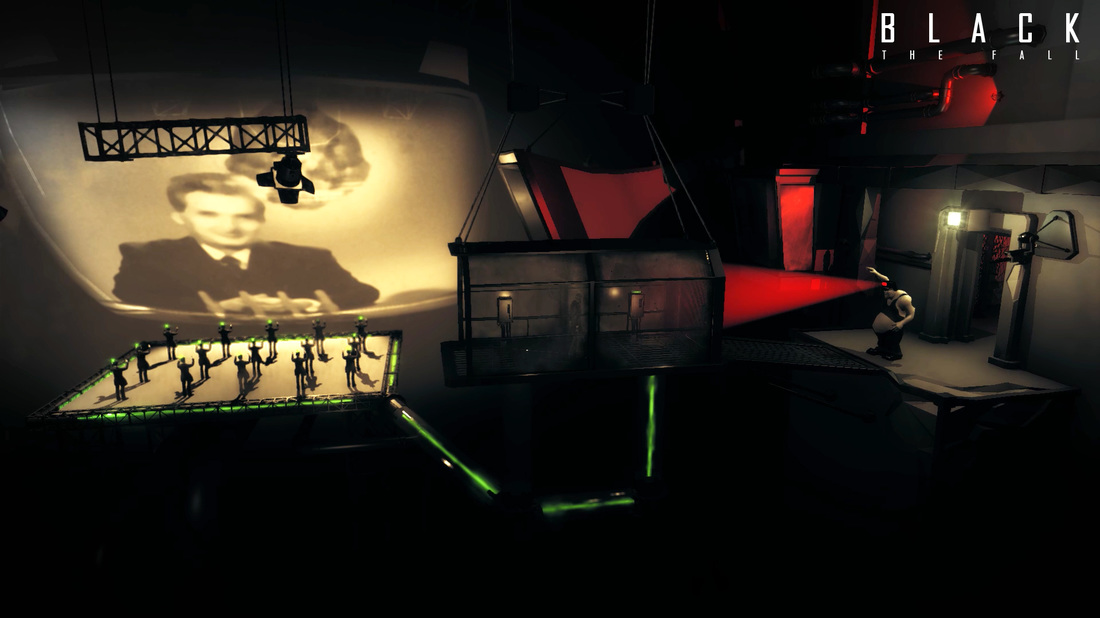
- The key to a good game is in the game mechanics and puzzles!
- Non, I won't even bother if there isn't a good story.
- Nein, nein, nein, nein! Without a striking atmosphere, there is no game!
Well, I can assure you, one can't go wrong if he considers all aspects, no matter how overwhelming a task this seems.
There are plenty of courses and how-to's on programming, modelling and so many music resources (you wouldn't believe the tens of musicians proactively offering their services). With a bunch of talented people who work hard (during their spare time as well) you can get this covered. It's then a matter of mixing everything into something that makes sense. But from making sense to making something that feels fun and smart for the player, it's a long way. This mostly relies on how one uses the aforementioned means to convey emotion.
This is where game design and storytelling come in play. Besides the game design courses and publications and the ever increasing storytelling learning resources, there is some sort of alchemy when creating an interactive story, such as a video game.
Not sure how the big guys do it, but here's some insights on how an indie game development studio (namely ours) tackles storytelling. Introducing a new character to be more precise.
At some point we promised to our Kickstarter backers that Black (our main character) will be the lucky owner of a pet. So the moment came to decide what do we want from it, how is it relevant and what's the purpose of meaning, of course.
It took roughly 2h and all eight of us to decide his nature and capabilities. And other tens of hours to put on paper the puzzles for him + tens of days to actually build the puzzles in Unity. Anyway, back to the 2h thing. We split in teams of four and so the pet game begun:
Step 1: GO WILD
- Each team has 5 min to put on paper all the ideas that come to mind around Black's type of pet
- Rules: anything goes if it sounds fun.
- The two teams reunite and read everything out loud
At this stage we were rumbling about anything, wondering more in the insects area. Getting inspiration from the real creatures helped us come up with a lot of capabilities and weaknesses. For instance a wasp can fly but it can't swim. However we had no restrictions, in terms of consistency, at this stage.
Step 2: BREAK IT DOWN
- Now each team adds pet properties
- Rules: Anything that applies to any of the pet types previously discussed
- The two teams reunite and read everything out loud
NOTE: Ideally, the teams have equal sizes plus one person who moderates everything: keeps track of time, writes down the outcome (merging the lists) and manages the voting process.
Step 3: TOP 5 & TOP 10
- Each team takes 5 min to select only 1 pet type and 10 characteristics/properties out of the entire pool.
- Rules: The properties need to characterize the selected pet types
Step 4: VOTE & (make it) COUNT
- We take the lists, merge them into one and vote.
- Rules: For the pet type list, each person can assign 0-3 points to each entry, but the total of points added for the entire list, can't be higher than 10. For pet characteristics the numbers are higher (assign 0-3 points, having a total of 20 to assign), as we need to keep 3 out of 10. Each of us votes considering how that type or characteristics fit better the atmosphere and the story.
- We have a winner.
At this stage each of us votes, but there is no debate on it. Each person carefully ponders and independently assigns points based on what he thinks is best for the game, it can be better implemented or just what he likes best. In our case it was almost unanimously left out to have our pet crushed or to have him attack with his legs. Not because they were poor characteristics, but because they would rule out better ones (e.g.: if the pet can be crushed, then you can't use it to hold a heavy door, object or Black, himself).
Step 5: CONTEMPLATE
As you can see he grew and now he has a personality.
This is how Sand Sailor Studio does a brainstorm when in need to build something from scratch. It's a method that takes some time (to play around) and discipline, but it's definitely worth it as it adds some structure to the creative process, which makes it more efficient in terms of time and desired outcome. Also you have all team members participating equally, regardless of their level of extroversion, avoiding to have everyone focused on that one idea, supported by the loudest.
So, how do YOU brainstorm?
PS: Thanks, Execution Labs, for passing the knowledge along :)
Step 5: CONTEMPLATE
- Cry after the ideas you lost and embrace the winning concept.
- Start building on that and evaluate plausible use cases
- Sketch a story of how Black encounters the pet, possible adventures together, desired conveyed emotion palette and pet's fate.
As you can see he grew and now he has a personality.
This is how Sand Sailor Studio does a brainstorm when in need to build something from scratch. It's a method that takes some time (to play around) and discipline, but it's definitely worth it as it adds some structure to the creative process, which makes it more efficient in terms of time and desired outcome. Also you have all team members participating equally, regardless of their level of extroversion, avoiding to have everyone focused on that one idea, supported by the loudest.
So, how do YOU brainstorm?
PS: Thanks, Execution Labs, for passing the knowledge along :)



 RSS Feed
RSS Feed
